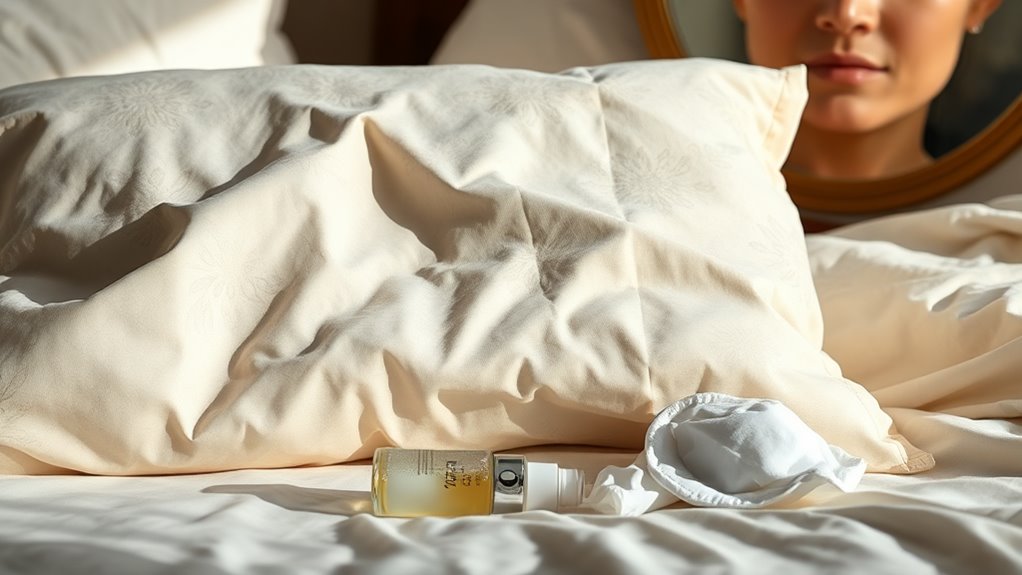Your Pillowcase Might Be the Cause of Your Breakouts
Just as the classic tale highlights the hidden dangers of neglect, your pillowcase might be a quiet contributor to your skin issues. Each night, it collects oils, dirt, and bacteria that can clog your pores and spark breakouts. Understanding the connection between your pillowcase and acne is essential. What materials are best, and how often should you clean your pillowcase? Discovering these answers could be key to clearer skin.
The Connection Between Pillowcases and Acne
Pillowcases can significantly impact your skin health, particularly when it comes to acne. Oils, dirt, and bacteria accumulate on your pillowcase, creating an environment that promotes acne causes, such as clogged pores and inflammation.
If you sleep on a contaminated surface, it increases your chances of breakouts. Regularly washing your pillowcases can help mitigate these risks and improve your skin condition.
Common Materials and Their Effects on Skin
When considering skin health, the materials used in your pillowcase play a crucial role.
Cotton, while breathable, can absorb oils and bacteria, potentially leading to breakouts. Silk, in contrast, reduces friction and retains moisture, making it gentler on your skin.
Microfiber can trap dust and allergens, possibly exacerbating skin irritations. Choosing the right fabric can significantly influence your complexion.
Cleaning Your Pillowcases: Best Practices
Although you may not think about it often, regularly cleaning your pillowcases is essential for maintaining skin health.
Follow these best practices:
- Wash pillowcases every three to four days.
- Use a gentle, hypoallergenic detergent.
- Avoid fabric softeners, which can leave residues.
- Dry on a low heat setting to maintain fabric integrity.
These actions can significantly reduce the risk of breakouts.
Choosing the Right Pillowcase for Acne-Prone Skin
Selecting the right pillowcase can significantly impact your skin, especially if you’re prone to acne.
Opt for hypoallergenic materials like silk or bamboo; they reduce friction and help prevent irritation. Avoid cotton, as it can trap oils and bacteria.
Regularly replace your pillowcase to minimize buildup, and consider antibacterial options to further diminish skin issues. Additionally, choosing the right pillowcase can complement a skincare routine designed for oily skin to achieve optimal results.
Prioritize your sleep environment for clearer skin.
Additional Tips for Clearer Skin
To achieve clearer skin, implementing a consistent skincare routine is essential.
Follow these key tips:
-
Cleanse your face twice daily with a gentle cleanser.
-
Exfoliate weekly to remove dead skin cells.
-
Moisturize to maintain hydration without clogging pores.
-
Use sunscreen daily to protect against UV damage.
Incorporating these practices can significantly improve your skin’s clarity and overall health. Additionally, understanding your specific skin type can help tailor your routine to address hormonal influences on your skin.

